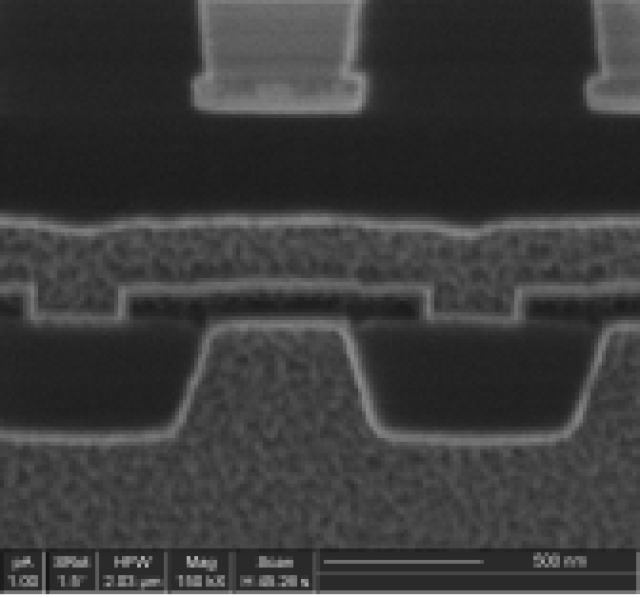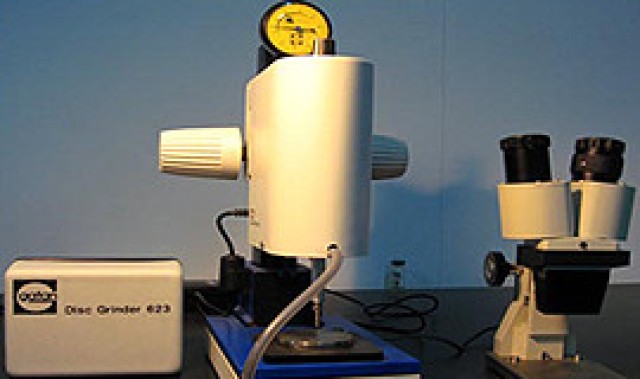
聚焦双束电镜对样品的要求是什么呢英语
- 聚焦离子束
- 2024-03-28 16:12:25
- 577
Title: Focusing on the Requirements of Samples for Double-Electron Microscopy
Double-electron microscopy (DEM) is a cutting-edge technology that enables researchers to visualize and manipulate materials at the atomic scale. This versatile technique has wide-ranging applications in various fields, including materials science, nanotechnology, and biomedical research. However, the success of DEM experiments depends on the quality of the samples prepared for analysis. In this article, we will discuss the crucial requirements that must be met when preparing samples for DEM.

1. Sample preparation
The first and most critical step in DEM analysis is sample preparation. The sample must be prepared in such a way that it remains stable and retains its chemical properties during the analysis. This can be achieved by following a specific protocol, which may involve various techniques, such as fixing, embedding, and/or passivation. In some cases, it may be necessary to use specialized equipment, such as a focused ion beam (FIB) machine, to ensure the sample's stability.
1. Sample size and shape
The size and shape of the sample can have a significant impact on the results of DEM experiments.Samples must be prepared to the appropriate size, typically ranging from a few nanometers to several hundred nanometers in diameter. The shape of the sample can also affect the results, as certain geometries may allow for better signal intensity and easier image analysis.
1. Sample environment
The environment in which the sample is placed during analysis is crucial. The sample must be placed in a container that is compatible with the experimental setup and the sample's specific requirements. In some cases, it may be necessary to use specialized samples, such as gold-coated copper electrodes, to ensure stable and consistent imaging.
1. Sample preparation protocols
There are various sample preparation protocols that can be used depending on the specific application and equipment available. Some of the most common protocols include:
(i) Fixed-target protocol: In this protocol, the sample is fixed with a photosensitive material, such as a metal salt, to enable imaging. The fixed sample is then placed in a sample holder, which is compatible with the experimental setup.
(ii) Embedded protocol: In this protocol, the sample is embedded in a polymer matrix, which is then coated with a photosensitive material. The embedded sample can be visualized using a SEM or TEM setup.
(iii) Passivated protocol: In this protocol, a metal layer is deposited onto the sample, which is then passivated using a different metal layer or a polymer layer. This allows for imaging of the sample's surface and interface properties.
1. Sample quality
The quality of the sample preparation directly affects the quality of the images. Some of the key factors that must be controlled include:
(i) Sample stability: The sample must be stable and not undergo any significant changes during the analysis process.
(ii) Sample composition: The sample must be composed of the required materials and in the appropriate amount.
(iii) Sample surface preparation: The sample surface must be clean and free from any contaminants or defects that could affect the imaging.
Conclusion
Double-electron microscopy is a powerful tool for exploring the atomic structure of materials. However, to achieve accurate and reliable results, it is essential to carefully prepare the samples for analysis. The sample preparation process must be optimized to meet the specific requirements of the experiment, and it is important to control factors such as sample stability, composition, and surface preparation. By focusing on these requirements, researchers can ensure the best possible results from their DEM experiments.
专业提供fib微纳加工、二开、维修、全国可上门提供测试服务,成功率高!
聚焦双束电镜对样品的要求是什么呢英语 由纳瑞科技聚焦离子束栏目发布,感谢您对纳瑞科技的认可,以及对我们原创作品以及文章的青睐,非常欢迎各位朋友分享到个人网站或者朋友圈,但转载请说明文章出处“聚焦双束电镜对样品的要求是什么呢英语 ”

上一篇
蔡司多焦点镜片介绍
下一篇
离子导电材料导电机理








